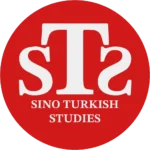In recent times, although different examples such as Göbeklitepe have emerged, the first societies we can call state-based, such as the Sumerians and their contemporaries, appeared in Mesopotamia. The civilization of Ancient Greece and Rome, which represented slave societies, emerged around Mesopotamia, in the Mediterranean. The most advanced and developed examples of feudalism appeared among the ancient tribes of Asia. Finally, after the maturation of feudal civilization in the periphery of Asia, the civilization of capitalism emerged on the Atlantic coasts following Magellan’s rounding of the Cape of Good Hope.
Our world is once again undergoing a civilizational change. This process, too, is unfolding in accordance with the center-periphery law of history. Capitalism, which developed centered in Western Europe and North America, has entered a period of decay, transforming into imperialism. Within the struggle of oppressed nations against imperialism, the first lights of the Asian Age have been seen. Today, the alternative to imperialist-capitalist hegemony, which has become destructive, estranging humans from themselves and their nature, severed from production and transformed into a tributary system, is rising as a communal and sharing-based Asian Age.
The Secret of Societies with States
In this new rise, the most important issue to grasp is that the nations in Asia, resisting the highest stage of capitalism, imperialism, and advancing the democratic revolution process through fighting it, establishing and developing independent national states, achieving the first revolutions of the Asian Age, and today leading the multipolar world against hegemonism, are also those nations that have established great empires over centuries, possessing the ability and accumulation to organize states and armies. Turks, Chinese, Persians, Russians, Indians, and Arabs are yesterday’s state and civilization builders and today’s revolutionary countries. This is not a coincidence. The state experience and success in nation-building of these nations disable the two ultimate tendencies of imperialism.
First, the ultimate goal of imperialism is to leave oppressed nations stateless, eliminating the national state, which is the obstacle to its maximum exploitation, from its customs walls to its national market. A people left stateless and pushed into full colonial status is the most preferred option for imperialism. Therefore, the ability to organize states and armies, which has persisted throughout history, is the most significant obstacle to imperialist exploitation.
Second, nations that have established great empires in the past also possess the ability to accommodate and integrate multiple tribes. Not engaging in conflict and confrontation with different tribes, but rather benefiting from their advanced features, forming a “nation” that encompasses the characteristics of many tribes, is possible with this legacy of great empires. While imperialism tends to dismantle the nation, dividing society along ethnic and sectarian lines and reviving feudal remnants, nations that have established empires unify and integrate tribes.
This feature is also reflected in nationalist ideologies. As seen in Yusuf Akçura’s distinction between revolutionary and reactionary nationalism; Turkish, Chinese, and Persian nationalisms targeted British imperialism in the past and American imperialism today, forming a unity among different ethnic elements, whereas Greek, Armenian, and Kurdish nationalisms have always taken a separatist and collaborationist position, turning their fronts not towards imperialism but their neighbors. The most important reason for this is the possession or lack of civilizational accumulation. The term “Turkish nation,” given to the people who fought the War of Independence and founded the Republic of Turkey, is a political term formed through revolution. What gems lie within this civilizational accumulation?
Travelers of the Silk Road: Turks and Chinese
To say that Turks and Chinese built the most important and pivotal civilizations of the feudal period in world history would not be an unjust assertion. These two civilizations, representing the pinnacle of feudal production relations and culture, led significant breakthroughs in world history. The ground where these breakthroughs occurred and where these civilizations flourished has always been the historic Silk Road.
The Turks, from 1000 BCE to 1000 CE, experienced their journey from tribal confederations to state and empire builders along a route from the Central Asian centers of the Silk Road to Anatolia. While advancing on this route, their most prominent feature was their ability to form large, disciplined, mobile, and highly capable armies of a society primarily based on nomadic pastoralism, despite also experiencing significant agricultural production breakthroughs such as the miraculous Kariz Canals in the Turfan region. These armies and the Khans who led them appropriated, harmonized, and assimilated the accumulated civilization of all the regions they conquered and Anatolia. They knew how to combine this legacy with their state-building experiences.
The Turks, by replacing the Byzantium, which had become heavy, burdened with taxes, and lost its civilizational claim, with a young, dynamic, and rising new feudal civilization, contributed greatly to the development of trade routes symbolized by the Silk Road and the enrichment of the region. The peak of this civilizational revolution can be marked by the conquest of Istanbul by Sultan Mehmed the Conqueror. This conquest removed the dead weight on trade routes and led to the stage of empire-building for young Turkish feudalism. It also provided a model for the centralized feudal empire described in Machiavelli’s famous work, “The Prince,” which Western Europe would experience in subsequent centuries.
The Cradle of Civilization: China
One of the brightest examples of this accumulation is undoubtedly Chinese civilization. With its history spanning over 4000 years, China is the world’s oldest settled civilization. Throughout history, China built a civilization synonymous with wealth, trade, inventiveness, and prosperity. With the advantages of being a settled agricultural civilization, rejuvenated trade, and the centrality of the Silk Road, it possessed a wealth unimaginable by Western societies for centuries. During the Han Dynasty, it secured the trade routes to Central Asia and led the silk trade. As mentioned in the Orkhon Inscriptions by Bilge Khagan, “I improved relations with the Chinese people. Gold, silver, and silk are provided without problems,” the silk mentioned was one of China’s greatest riches. As seen in this example, China, in every period, preserved its high civilization and culture by maintaining peace and trade, and many times invasions directed towards the Chinese mainland were assimilated within this high culture.
One of the most striking examples of this is the Mongol invasion led by Genghis Khan’s grandson Kublai, who established a dynasty that ruled China and gradually adopted Chinese traditions and culture, becoming the Yuan Dynasty and later being overthrown by the Han Chinese. Moreover, the Chinese knew how to nourish themselves from the cultures around them. One of the most striking examples of this is the embedding of Buddhism, a religion of Indian origin, in Chinese society. The Chinese civilization, which grew and peaked during the Tang and Song Dynasties, made significant contributions to humanity, particularly in new inventions. They made groundbreaking inventions in various fields, including paper, gunpowder, printing, the compass, ink, and silk, which changed the world and interacted with different civilizations.
Chinese civilization, too, was subject to the dialectical laws of civilization mentioned earlier. Reaching its pinnacle during the Ming Dynasty, China’s feudal civilization stopped developing, turned inward, and eventually faced the threat of colonization in the age of external trade capitalism. Classical liberal economist Adam Smith explains this cessation of development as follows: “China has long been one of the richest, that is, the most productive and well-cultivated countries in the world, possessing the most industrious and populous nation. But it seems to have been long stationary. Marco Polo, who visited it more than five hundred years ago, described it in nearly the same terms as it is described by travelers today. It had probably been long stationary before that period, and seems to have undergone little change since.”
The Roots of State Theory in Asia
From these nations, which established great empires throughout the ages and left a significant mark on history, naturally emerged the greatest scholars on the structure, origin, development of the state, the art of governance, and political philosophy. Figures such as Confucius, Sun Tzu, Mencius, who are synonymous with Chinese civilization, and Tonyukuk, Yusuf Has Hacib, Nizam al-Mulk, who emerged from Turkish civilization, became iconic names that theorized the state experience of Asia, particularly the Turks and Chinese. Ibn Khaldun, whom we might call the founder of sociology and who influenced future generations with his “Muqaddimah,” rose on this Asian legacy. Thinkers like Machiavelli, Bodin, Hobbes, and Weber, considered pioneers of political science in the West, also built their theories by drawing from these roots
On the Threshold of a New Civilization
Contemporary civilization is one where new socio-economic systems that liberate and develop productive forces and humanity rise. The definition of contemporary civilization has been variable throughout history. In the 15th century, it was the developing and burgeoning Western civilization, while since the beginning of the 20th century, it has been the Asian Age revolutions that emerged as an alternative to the imperialist-capitalist system, which decays by forcibly seizing the resources of the oppressed world, sinking into usury and rent-seeking, and gradually detaching from production. The rising Asian Age today represents a significant breaking point against hegemonism, symbolizing the search for a new international order based on sharing and communal values.
In this break, the roles that China and Turkey, the fortresses at the eastern and western ends of Asia, will play are crucial. We must face a common threat to achieve a common future. The Belt and Road Initiative, spearheaded by the People’s Republic of China, was a response by China and the national states acting with it to US hegemonism. However, it is of great importance to organize the maritime leg of this initiative, which revitalizes the historic Silk Road on land and creates examples of a new type of fair and sharing-based order.
US imperialism built its global dominance on the theories of the famous historian Alfred Thayer Mahan, who considered naval power as the most crucial element of prosperity and wealth. Today, we see that the two most vital threats of US imperialist aggression are concentrated in the Eastern Mediterranean and the South China Sea. In the Eastern Mediterranean, Greece, Israel, and Southern Cyprus, and in the South China Sea, initiatives like QUAD threaten the national interests of Turkey and China. These two regions also play a key role in the construction of the “Maritime Silk Road” and in paving the way for the civilization that will develop from the new Silk Road. The strategies developed by China and Turkey against these US-centric threats also bear similarities: Turkey’s Blue Homeland Doctrine and China’s National Maritime Doctrine.
The fates of the two ancient civilizations at the two ends of Asia, which have directed world history for centuries, are once again united in solving common security issues against the hegemonic common threat and in building what Xi Jinping calls “a community with a shared future for mankind.”
References:
1. Doğu Perinçek, *Bozkurt Efsaneleri ve Gerçek*, Kaynak Yayınları
2. Vladimir Ilyich Lenin, *Marksizmin Bir Karikatürü: Emperyalist Ekonomizm*, Kaynak Yayınları
3. Kemal Şenoğlu, *Yusuf Akçura: Kemalizmin İdeoloğu*, Kaynak Yayınları
4. Doğu Perinçek, *Osmanlı’dan Bugüne Toplum ve Devlet*, Kaynak Yayınları
5. Ray Huang, *Çin Tarihi: Bir Makro Tarih Yaklaşımı*, Istanbul Bilgi University Press
6. Efe Can Gürcan, *Türkiye ve Çin’in Değişen Deniz Jeopolitiğinin Neo-Mahancı Bir Okuması*, BRIQ Vol. 2, Issue 1





